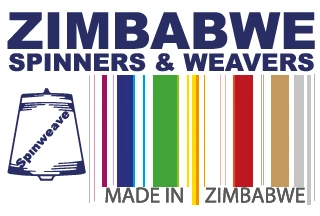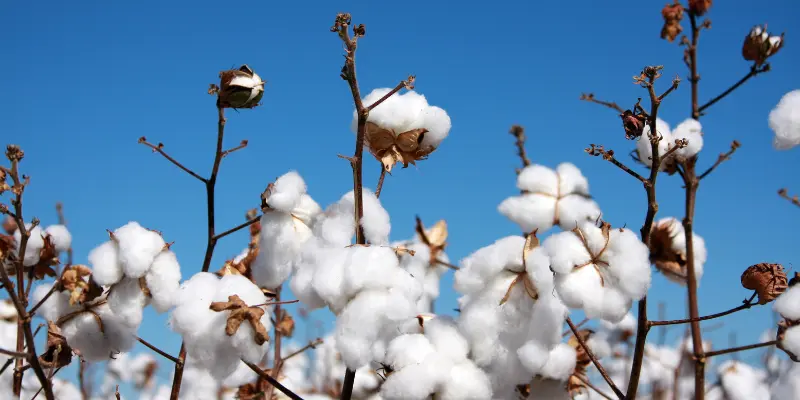The textile industry in Zimbabwe has a long history, dating back to the colonial era when the country was a major producer of cotton. Today, the industry is relatively small and faces a number of challenges, including competition from imported goods, high production costs, and a shortage of skilled workers. Around 95% of textiles in Zimbabwe are imports. This means local production is way below expected.
Textile industry in Zimbabwe operating below capacity
The government has identified retooling and recapitalizations of the local textile industry as key for the sector to improve its contribution to the country’s gross domestic product.
The once-flourishing local textile and fashion industry is currently under siege from an influx of imported fabrics and clothing.
However, the launch of the Zimbabwe Fashion Council in Harare in April 2023 saw stakeholders sharing ideas on how to turn around the fortunes of the sector.
The Minister of Women Affairs, Community, Small, and Medium Enterprises Development, Dr. Honourable Sithembiso Nyoni noted the importance of continued retooling and recapitalization for the sector to reclaim its domestic and international market share.
“Zimbabwe was known for its hand-picked cotton, the production of special Zimbabwean material called lulu, and companies such as Julie Whyte were very much well known nationwide, regionally, and internationally,” she said.
“These companies were contributing to the national cake in a big way. We would like to regain that name.”
Zimbabwe Fashion Council Chairperson, Mr Partson Gatsura noted the need to unlock the full potential of the textile and fashion industry in the entire value chain.
“We must promote the local fashion industry across the entire value chain so it can also contribute to the country’s GDP on a sustainable basis. The vision is that the industry be a catalyst for development,” he said.
The government has already shown its commitment to reviving the local textile industry after entering into an agreement with a diversified business group, Agro-Value Chain (AVC) to accelerate the revitalization of David Whitehead Textiles.
The group has already injected US$18 million that will pave the way for the installation of new equipment, which includes ginning and spinning machines.
Despite these challenges, there are still a number of companies involved in textile production in Zimbabwe. Some of the key players in the industry include:

1. Zimbabwe Spinners and Weavers – This is one of the largest textile manufacturers in the country, producing a range of fabrics and garments using locally grown cotton.
Address: 11 Highfield Junction, Highfield road, Southerton, Zimbabwe
Phone: +263 78 004 0343
Email: [email protected]

2. David Whitehead Textiles – This company specializes in the production of denim and other heavy fabrics, and has been in operation since the 1950s. this company reopen again in 2022 with 20 million dollar investment and will produce more than 10 million metres of fabric annually.

3.Jacaranda textiles- Jacaranda textiles started its journey in 2004 as fabric manufacturers under the leadership of its experienced entrepreneurs. Increasing its operating activities helped to enlarge its territory by establishing the production facility in 2015.
We are a textile organization which specializes in manufacturing, designing, production and distribution of various lines of finished and raw materials. Jacaranda Textiles aims to be the market leader locally and beyond.
Through the co-operation from our head office in China and our global network of agents, suppliers and distributors, we have expanded our production capacity, developed a skilled workforce through technology transfer in the textile industry. We boast of competitive prices and high quality products which meet our customers’ needs and satisfaction.
Address: 22 Simon Mazorodze, Unit 7A Beatrice Corner, Southerton, Harare
Tel: +263 242 748 700
Email: [email protected]/[email protected]
www.jacarandatextiles.co.zw

4.Textile Gallery : Textile Gallery has been manufacturing unique high-quality fabric from the finest components and materials since 1995
Over the years, the company has built up its product mix with its extensive furnishing fabric range, as well as having access to a comprehensive printing plant.
Textile Gallery offers a cut length as well as a wholesale service to all its customers from its variety of both local and imported fabrics.
Phone: +263 0772 200 277
Email: [email protected] / [email protected] / [email protected] / [email protected]
Address: Corner Seke Road / Boshoff Drive, Graniteside, [Next to Total- Motor City] Harare, Zimbabwe
www.textilegallery.co.zw
Cotton Industry in Zimbabwe
Cotton is an important agricultural commodity in Zimbabwe and is a major cash crop for many smallholder farmers in the country. The cotton industry in Zimbabwe is a significant contributor to the country’s economy, providing employment and income for thousands of people.
Zimbabwe’s cotton industry is characterized by a number of small-scale farmers who grow cotton on small plots of land. The cotton is then sold to cotton ginners, who process the cotton and sell it to textile manufacturers.
The Cotton Company of Zimbabwe is the largest cotton-producing company in the country. It has an 80% market share. The company was privatized in 1994 and was in competition with Cargill at the time. After 2000 other players came and in 2005 when the foreign currency challenges began Chinese companies also joined the cotton industry. At the peak of hyperinflation 2007/8 there were 28 cotton companies in Zimbabwe although they were fly by night companies. The company has revived its relationship with farmers so that they start to grow cotton again.
The response has been positive considering that the Presidential Input Scheme is now in place. The Presidential Input Scheme was first announced by Finance Minister Patrick Chinamasa during the 2015 National Budget with the aim to revive cotton production. The inputs package is a direct subsidy to the farmer administered by Cottco. During the 2015/6 season, 10 800 tonnes of cotton was delivered by farmers to Cottco, and for the 2016/7 season 54 000 tonnes was delivered by farmers. The jump represents a 400% growth in cotton production.
National output for 2015/6 was 28 000 tonnes and for the current season, its 70 000 tonnes and Cottco has the major market share in all these statistics. Currently there are about six cotton companies including the Cotton Company of Zimbabwe. The company is buying the cotton at 47 cents per kilogramme and there would be price adjustments of 10 cents for farmers who have graded their cotton. This year the company has encouraged farmers to grade their cotton. The major challenges for cotton production last season were side marketing, low productivity per unit area, diversion of fertilizer to other crops and the heavy rains.

Despite the importance of the cotton industry in Zimbabwe, it has faced a number of challenges in recent years. These include low cotton prices, competition from imported textiles, and a lack of investment in modern farming technologies.
To address these challenges, the Zimbabwean government has launched a number of initiatives to support the cotton industry. These include the introduction of a cotton input subsidy program to support smallholder farmers, as well as measures to promote value addition and processing of cotton in the country.
Overall, the cotton industry in Zimbabwe has significant potential for growth and development, and with the right investment and support, it could continue to provide important economic benefits for the country and its people.
In recent years, the government of Zimbabwe has taken steps to support the textile industry by providing incentives for local textile producers and promoting the use of locally grown cotton. The government has also introduced measures to restrict the importation of second-hand clothing, which has been blamed for undermining the local textile industry.
The textile industry in Zimbabwe still faces significant challenges, and there is a need for further investment and support to help the industry grow and thrive.





















We are Mersan Machinery a textile machine producer located in Turkey we would like to ask you to send us the list of the textile dyeing houses in ZIMBABWE.
also, we would like to know more about the advertisement.
we are the sewing machinery and garment equipment supplier in China.
I have over 10-years experiences on the Zimbabwe market. and have clients from both Harare and Bulawayo.
Looking forward to hearing from you.
Its humair amin here from pakistan
I m home textile manufacture. Like bedding. Kitchen and table covers
Want to business with Zimbabwean company..any query about home textile
Contact us